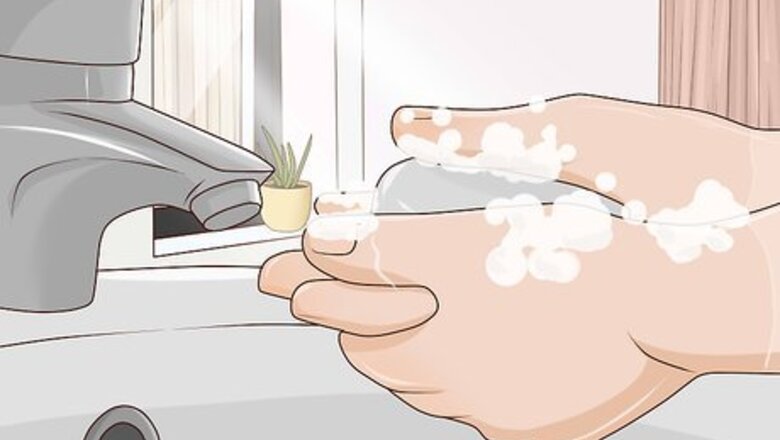
views
X
Trustworthy Source
Cleveland Clinic
Educational website from one of the world's leading hospitals
Go to source
Boils are usually harmless and clear up on their own in a week or two, but they can be painful and uncomfortable while they last. For the most effective treatment, soak the boil in warm water to drain it safely and keep the area clean to prevent infections. Do not squeeze the boil or you could make it worse. With careful care, the boil will heal without causing any lasting problems.
Draining the Boil

Wash your hands before and after touching the boil. You risk introducing more bacteria into a boil or spreading the bacteria whenever you touch it. Always thoroughly wash your hands with soap and warm water before and after touching the area. This includes before and after you start the process of draining the boil.

Press a warm compress onto the boil for 20-30 minutes. This treatment helps draw the pus out of a boil so it drains safely. Take a towel or washcloth and soak it with warm water. Press it against the boil and hold it there for 20-30 minutes. Rewet it if you need to. Warning: Do not squeeze or press on the boil while you’re soaking it. Let the pus naturally come to the surface. While a wet towel is best, you could also use a warm pack wrapped in a towel for a similar effect. If the boil is in a hard to reach spot, try taking a warm bath instead of trying to hold a compress against it.

Repeat this treatment 3-4 times per day until the boil starts draining. Soaking the boil won’t produce an immediate result, so be patient. You’ll have to repeat the treatment for a few days in a row. After a few days, the boil will come to a head and start draining on its own. You can tell that the treatment is working when you start to see a white spot in the middle of the boil. This is the pus coming to the surface.

Clean the pus that drains from the boil. Once the pus starts draining, wipe it up right away with a clean tissue or paper towel. Then wash the area gently with warm water and antibacterial soap. Blot the area clean with a dry, clean towel when you’re finished. Don’t use harsh antiseptics like alcohol or hydrogen peroxide. These can irritate the area and cause more pain.
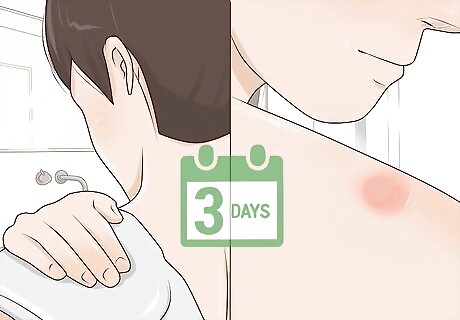
Continue using heat for 3 days after the boil ruptures to drain all the pus. When the boil starts draining, that doesn’t mean all the pus is out yet. Ensure the boil is empty by continuing the draining treatment for 3 days after the boil ruptures. This removes any remaining pus so the boil doesn’t come back. You’ll probably be tempted to squeeze the boil when it starts draining, but resist that urge. You could end up pushing the pus deeper into your skin and making the infection worse. The boil might look a bit more irritated and red right after it starts draining because the skin is broken. However, it should start shrinking within a few days as the pus drains. If the inflammation doesn't clear up in a few days, you might have an infection, so see your doctor for an exam.

Take over-the-counter pain relievers if the pain is bothering you. The pressure and inflammation under your skin could be painful until the boil heals completely. OTC pain relievers like ibuprofen, acetaminophen, and naproxen can all reduce the pain while you heal. Use any of these medications and take them according to the product instructions. Always follow the dosage instructions that come with each medication. Different brands or types may have different instructions.
Preventing Infections

Keep the boil covered with gauze or a bandage after it bursts. Once the boil starts draining, it will have an open wound until the skin heals. This shouldn't cause much pain, but could leave your skin open for infections. Cover the area with sterile gauze pads or a bandage until it heals. This prevents bacteria from entering or exiting the boil. Make sure the area is dry before you cover it. Moisture can help bacteria grow. If you use a sticky bandage, make sure only the non-sticky part touches the boil. Otherwise, it could rupture when you pull the bandage off.

Change the bandage at least once a day. The bandage could trap bacteria, so change it regularly. Remove it carefully and put a new one on at least once a day. The best time to do this is the evening because the bandage will pick up bacteria throughout the day. Also change the bandage any time it gets wet or blood soaks through it.

Wash the area twice a day with antibacterial soap. Prevent further contamination by keeping the area around the boil clean. Wet the boil and your hands, then rub some antibacterial soap on the area until it lathers. Rinse the area thoroughly and pat it dry with a towel. Don’t scrub the area with a towel, either to wash or dry the boil. This will cause more inflammation. Only dab it gently.

Avoid squeezing or scratching the boil. The bacteria inside boils can spread to other parts of your body, causing more boils. Do not scratch or squeeze the boil yourself. This could spread the pus around and lead to further infections. If you have trouble leaving the boil alone, try keeping a bandage or gauze over it at all times. This can prevent your urge to touch it. If you do accidentally scratch or pick at the boil, wash the area and your hands as soon as possible.

Clean your towels or washcloths after every use. The bacteria from boils can live on surfaces like these and spread to other people. If you use a washcloth or towel for soaking, washing, or drying the boil, wash it before using it again. Use hot water to kill all the bacteria.
Using Natural Remedies
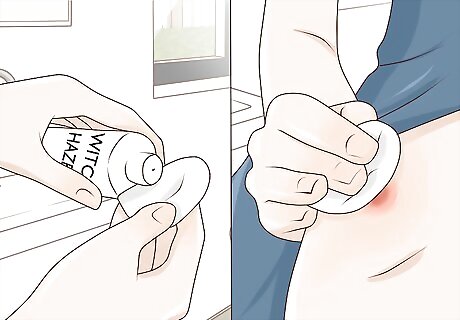
Reduce the boil's inflammation with witch hazel. Witch hazel is a natural astringent that reduces inflammation on the skin. It can also kill the bacteria causing the boil. Pour some onto a cotton ball and rub it onto your boil. Repeat this twice a day to see if the swelling and inflammation goes down. If you have sensitive skin, witch hazel could cause excessive dryness. If you experience any irritation, try making a 50% witch hazel-50% water solution to dilute it.
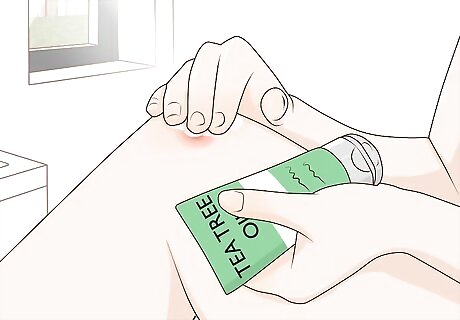
Kill the bacteria in the boil with tea tree oil. Tea tree oil is a natural antiseptic that can kill the bacteria in skin infections like boils. Get a cream with a 10% tea tree oil concentration and rub it onto the boil once a day. See if your symptoms improve after a week. If you notice any increased inflammation or pain, stop using the oil right away. You may be sensitive to it. Never use undiluted tea tree oil. Undiluted oils could be toxic.
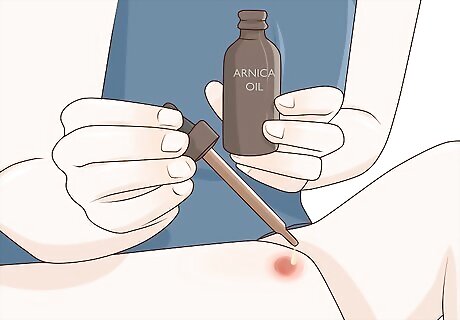
Use arnica to reduce the boil's inflammation and swelling. Arnica oil is derived from the arnica flower, which has been used to treat skin inflammation for centuries. Mix 1 tbsp (15 ml) of the oil with 2.1 cups (0.50 L) of water. Then rub the mixture onto the boil and cover it with a dry gauze wrap. Continue the treatment once a day. Some creams and ointments also contain arnica. You can use a cream with a 15% concentration of arnica oil to treat the boil as well. Never ingest arnica. It's toxic if swallowed. Don't use arnica on broken skin. If the boil pops or starts draining, then stop using the oil.
Seeking Medical Attention
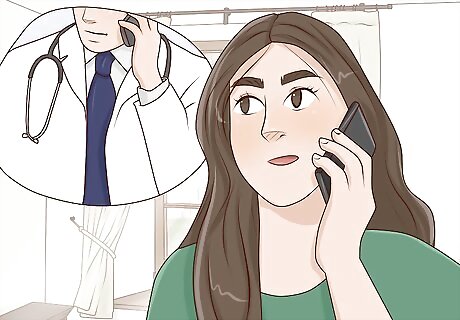
Call your doctor if you develop signs of an infection. Boils can rupture and allow bacteria into the wound, causing an infection. If untreated, an infection can lead to serious health issues. Signs of an infection include pus in or around the boil and red streaks in the skin around the boil. The area might also feel hot and more painful than it was before. If your boil starts to look infected, call your doctor immediately. Talk to your doctor before you go to an emergency room as you may be at risk of exposure to MRSA at a hospital.

See your doctor if your boil lasts longer than 2 weeks. Boils will normally rupture on their own and then heal within a week or so. But if your boil persists and is unchanged after 2 weeks, talk to your doctor. They can examine your boil and recommend treatment options. They may prescribe a cream that can help get rid of the boil. Your doctor may decide to lance the boil themselves.
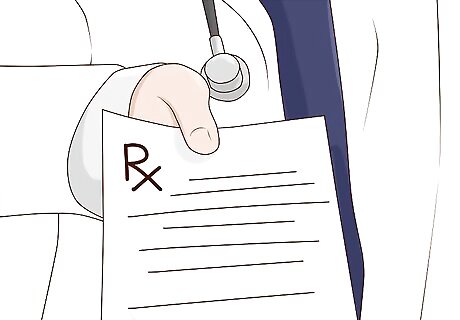
Seek medical treatment for a boil on your spine or your face. Boils in certain locations can be particularly painful and bothersome. Your spine has thinner skin and a boil there can hurt and make it difficult for you to sleep. Boils on your face can be embarrassing and painful. Visit your doctor so they can help treat your boil. Boils on your spine can accidentally rupture while you sleep. See your doctor for treatment.Warning: Do not try to pop or rupture boils on your face yourself or you could develop an infection and possibly scar your face.

Get medical help if you develop a fever. If you have a boil or boils and you develop a fever, it could be a sign of a system-wide infection or a deeper medical issue. Go to an emergency room or an urgent health clinic so you can be checked out. Even a low-grade fever could be a sign of an infection.
















Comments
0 comment